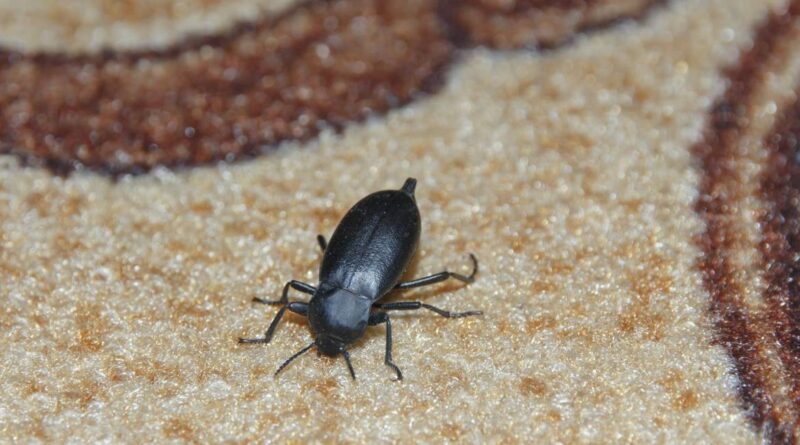How to Handle Rug Beetles and Pests
Have rug beetles and other pests been a significant concern for you? Then this blog post is for you. Well we know how annoying these can be. They damage rugs, resulting in costly repairs or replacements.
Understanding how to effectively manage and prevent these pests is essential to maintaining a healthy home environment.
In this blog post, we will discuss how you can handle rug beetles and pests through right rug cleaning San Francisco. So let’s not wait any longer and jump right into it!
Types of Rug Beetles
Rug beetles, commonly known as carpet beetles, belong to the family Dermestidae. The most common species include:
- Varied Carpet Beetle (Anthrenus verbasci): Recognizable by their varied coloration, usually a mix of black, white, and yellow scales.
- Black Carpet Beetle (Attagenus unicolor): These are generally dark brown to black and slightly larger than other carpet beetle species.
- Common Carpet Beetle (Anthrenus scrophulariae): These have a distinctive rounded shape with a pattern of white, brown, and yellow scales.
Life Cycle of Rug Beetles
Understanding the life cycle of rug beetles is crucial for effective management. They go through four stages: egg, larva, pupa, and adult.
- Eggs: Females lay eggs in hidden places, such as under carpets or in upholstery. These eggs hatch in 6-10 days.
- Larvae: The larval stage is the most destructive. Larvae can feed for several months to a year on natural fibers, causing significant damage.
- Pupae: The larvae then pupate, which can take a few days to several weeks.
- Adults: Adults are primarily a nuisance and do not cause direct damage to fabrics. They are responsible for reproduction and spreading the infestation.
Signs of Infestation
Detecting an infestation early is key to preventing extensive damage. Look for the following signs:
- Shed Larval Skins: Carpet beetle larvae shed their skins multiple times as they grow. These skins are often found near the infested items.
- Damage to Textiles: Look for irregular holes or threadbare spots in rugs, carpets, and clothing.
- Presence of Adults: Adult beetles can often be found near windows as they are attracted to light.
- Fecal Pellets: Small, dry, and often pellet-like droppings may be present near infested materials.
Prevention Strategies
Preventing rug beetle infestations involves maintaining cleanliness and reducing their access to food sources. Here are some effective strategies:
- Regular Cleaning: Vacuum carpets, rugs, and upholstery frequently to remove potential food sources like pet hair, lint, and other debris.
- Proper Storage: Store natural fiber items in sealed containers, especially during off-seasons. Use cedar chests or mothballs for added protection.
- Reduce Clutter: Minimize clutter where beetles can hide and lay eggs. Pay special attention to basements, attics, and closets.
- Inspect Second-Hand Items: Before bringing used furniture or textiles into your home, thoroughly inspect and clean them to avoid introducing beetles.
- Seal Cracks and Gaps: Prevent beetles from entering your home by sealing cracks and gaps in windows, doors, and walls.
Eradication Methods
If an infestation is already present, more intensive measures are required to eradicate rug beetles. Here’s a step-by-step approach:
- Deep Cleaning: Thoroughly vacuum all affected areas, paying special attention to edges and corners. Dispose of vacuum bags immediately to prevent re-infestation.
- Steam Cleaning: Use a steam cleaner on carpets and upholstery. The high temperature kills beetles at all life stages.
- Insecticide Application: Apply an appropriate insecticide to infested areas. Products containing pyrethrins or permethrin are effective. Follow the manufacturer’s instructions for safe use.
- Freeze Treatment: Small items can be placed in a freezer for several days to kill any beetles present.
- Professional Pest Control: For severe infestations, hiring a professional pest control service may be necessary. They have access to more potent treatments and can ensure thorough eradication.
Natural and Non-Toxic Solutions
For those who prefer natural or non-toxic solutions, several options are available:
- Diatomaceous Earth: This natural powder can be sprinkled in affected areas. It works by dehydrating the beetles.
- Essential Oils: Oils such as cedarwood, lavender, and eucalyptus are known to repel carpet beetles. Mix a few drops with water and spray on infested areas.
- Boric Acid: This can be used as a dust in cracks and crevices. It is effective against larvae but should be used with caution around pets and children.
Long-Term Monitoring and Maintenance
After eradicating an infestation, ongoing vigilance is crucial to prevent recurrence. Implement these long-term strategies:
- Regular Inspections: Periodically check vulnerable areas, such as under rugs and furniture, for signs of beetles.
- Continued Cleaning: Maintain a regular cleaning schedule to keep potential food sources to a minimum.
- Preventative Treatments: Consider using preventative insecticides or natural repellents in high-risk areas.
- Environmental Control: Keep humidity levels low in your home. Carpet beetles thrive in moist environments.
Final Thoughts
Handling rug beetles and other pests requires a combination of various things. You need to make sure of prevention, early detection, as well as effective eradication methods.
By understanding them, you can implement targeted strategies to protect your home. Following these steps mentioned in the blog post can certainly help you in the best manner possible.
Read also: Top 10 Benefits of Whiteboard Animations for Business

